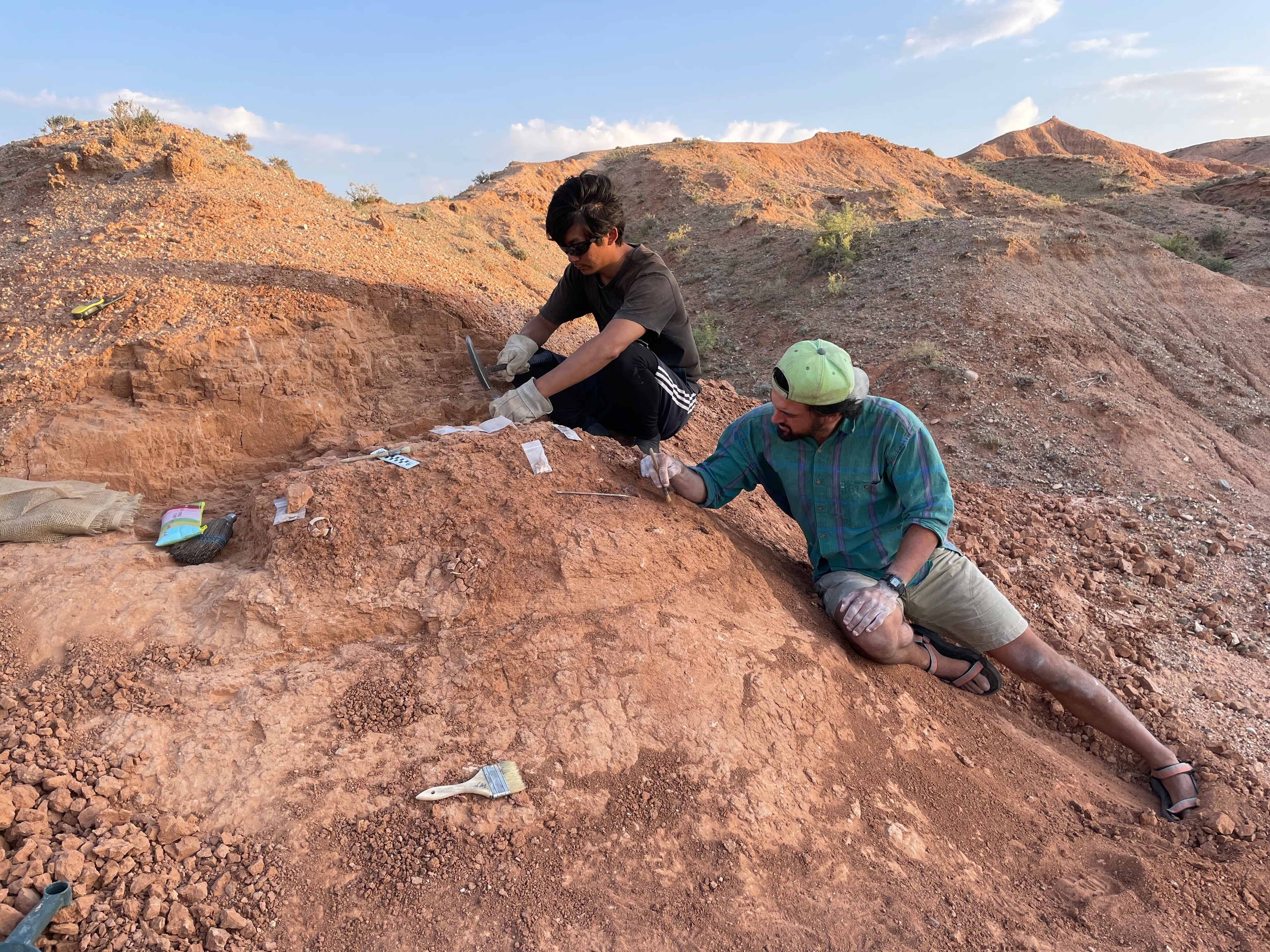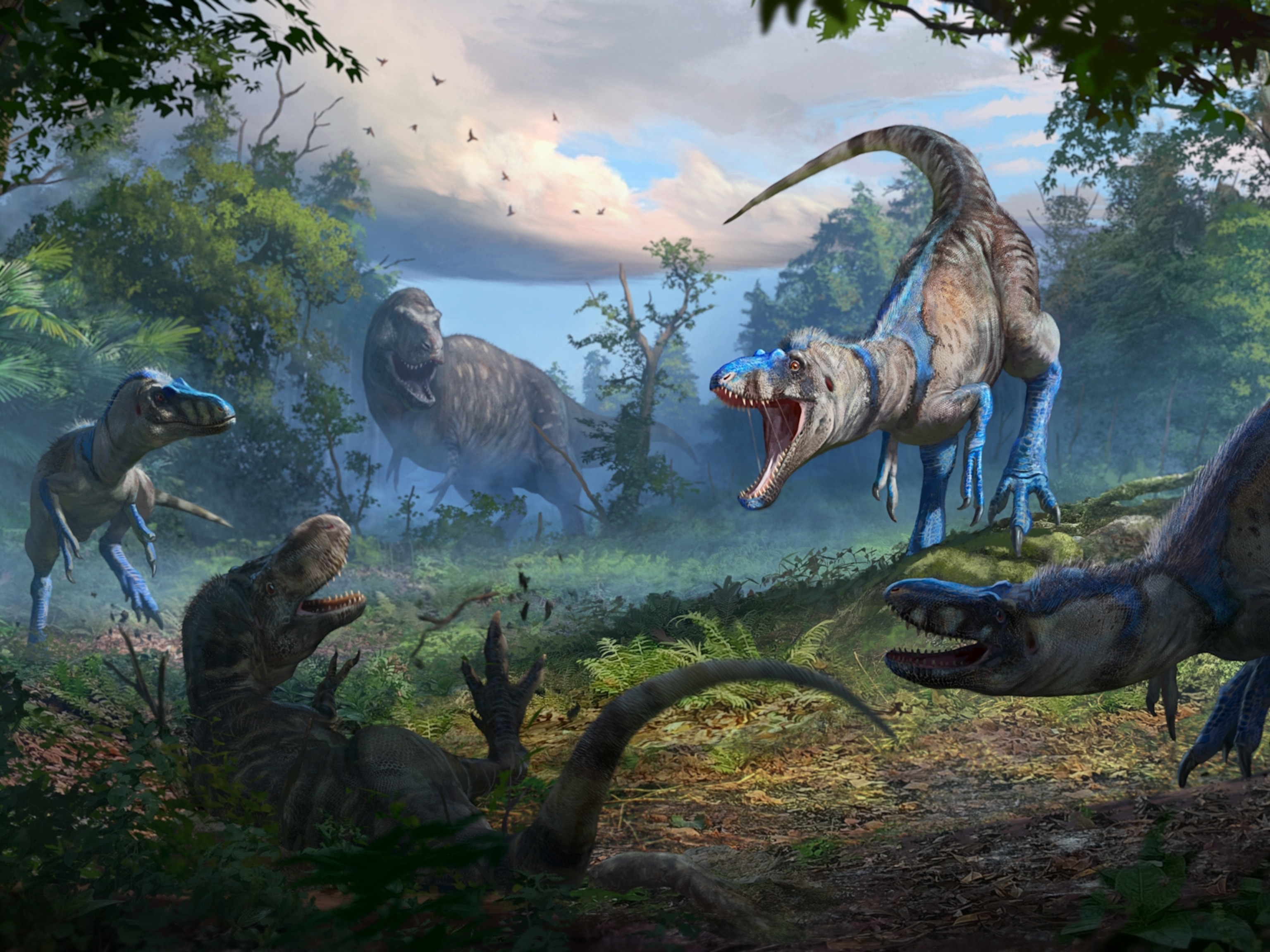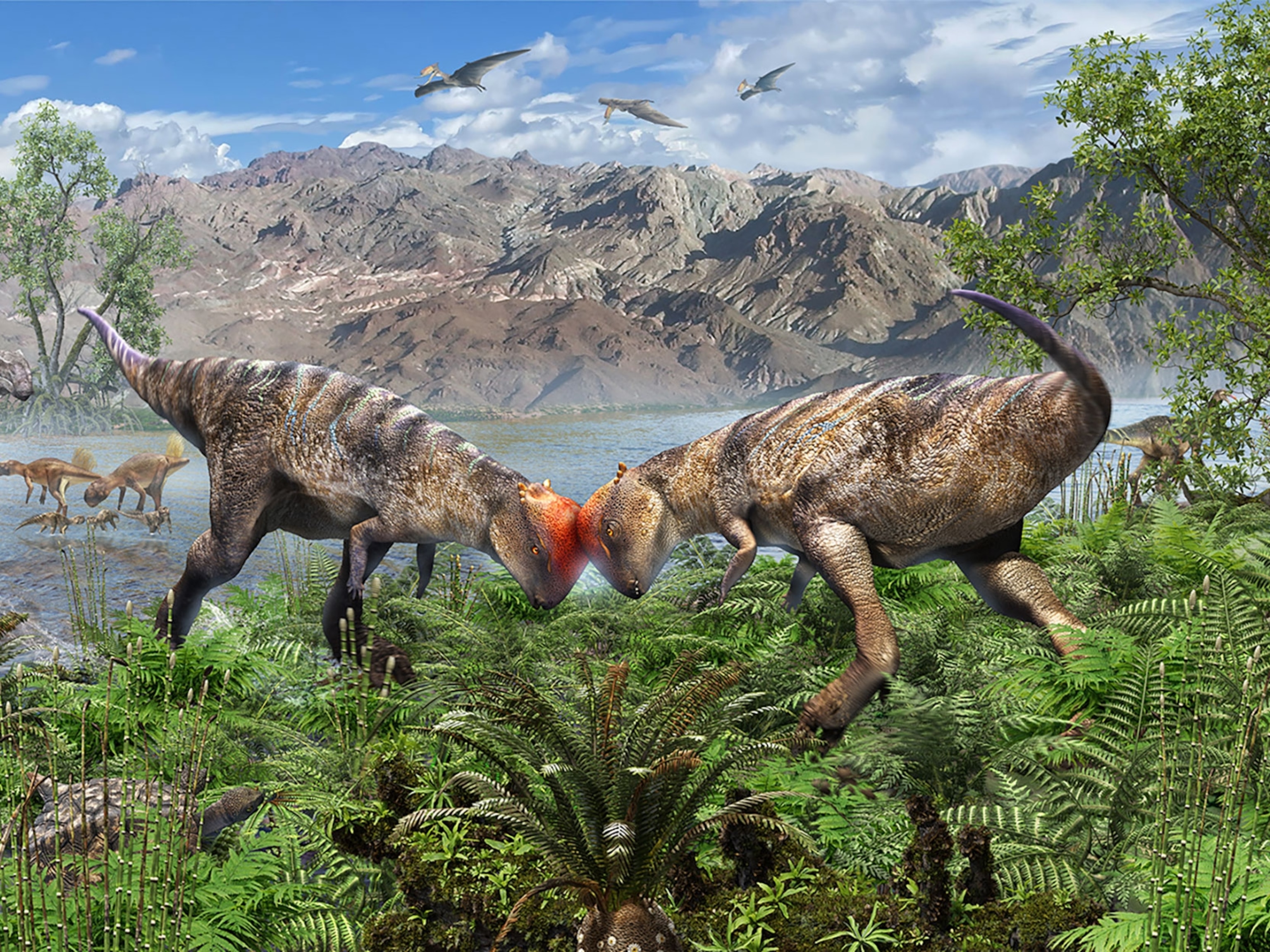
What made megalodon such a terrifying predator? New research holds clues.
The giant shark’s partial warm-bloodedness may have allowed it to thrive as an efficient, dominant hunter for nearly 20 million years—and led to its sudden extinction.
For nearly 20 million years, the oceans were prowled by a gigantic predator. The iconic shark Otodus megalodon swam seas all over the planet, snacking on the marine mammals of its time and reaching more than 50 feet in length. Why such a long-lived hunter suddenly disappeared 3.6 million years ago has confounded paleontologists, but new research suggests that running hot and living large ultimately doomed the megatooth shark.
Being at least partially warm-blooded was a key factor in the megalodon’s global spread, according to a new study published in the journal PNAS. The giant shark’s heightened body heat allowed it to swim faster and travel farther than other predators, pursuing whales and other blubber-rich prey into cool waters where cold-blooded hunters couldn’t venture. The ability to feed on fat-rich mammals opened a path for O. megalodon to grow so big.
Many sharks alive today are not exactly warm-blooded or cold-blooded. Thresher sharks, mako sharks, and great white sharks all have regional body temperatures that they maintain several degrees warmer than the surrounding seawater. Paleontologists suspected that O. megalodon had similar capabilities, but taking the temperature of a millions-year-old shark is no easy task. So William Paterson University biologist Michael Griffiths and colleagues turned to chemical clues within the fossils.
O. megalodon is a difficult shark to study. The known fossil record of its existence is entirely made up of teeth and vertebrae. But those fossilized parts contain a great deal of information about the animal’s biology. “Advances in geochemistry are helping shed new light on hypotheses drawn from modeling and inference alone,” says Griffiths, lead author of the new study.
As living animals feed and take in water, chemical elements with different variations, called isotopes, enter their bodies and become bound in growing tissues like bones and teeth. Isotopes of oxygen, in particular, can be used as a proxy for temperature. So Griffiths and his team investigated the geochemical traces of these isotopes in megalodon, as well as other ancient and modern sharks, fossil marine mammals, and fish that swam in the same environments as megalodon.
The fish were presumed to be ectothermic, or cold-blooded, based on their living relatives. They provided an estimate of seawater temperature against which the temperature proxies of megalodon and other animals could be checked.
The megatooth shark didn’t just run as hot as its living relatives; it was quite a bit warmer. The temperature of O. megalodon came out to about 12 degrees Fahrenheit higher than the surrounding seawater, elevated compared to other sharks, though not quite so high as the prehistoric whales and seal relatives of the time.
“The only existing shark that has a similar body temperature is the whale shark,” Griffiths says. “But its diet is very different from O. megalodon,” as the whale shark is a filter feeder. Megalodon’s physiological profile was closer to that of a great white shark, but bigger, likely allowing it to better hold on to heat.
Megalodon might not have been warm all over, though. It’s possible that the megatooth shark was what biologists call regionally endothermic, or warm-blooded only in parts of the body, Griffiths and colleagues note.
In modern sharks like the great white, heat generated by the body is exchanged to parts that are important to keep warm, such as the muscles, eyes, and brain. O. megalodon might have had a similar biological system. A fish that runs hot can travel faster and farther in search of prey than one whose temperatures are dictated by the environment, suggesting the megatooth shark was a formidable and far-ranging predator in its time.
“I think the new study certainly strengthens the case for O. megalodon being regionally endothermic, which is fantastic,” says Jack Cooper, a paleontologist at Swansea University in Wales, who was not involved in the new study. He notes that previous research by biologist Humberto Ferrón proposed that megatooth sharks were partially warm-blooded, and the new study adds further evidence that the physiology of O. megalodon was similar to that of its living cousins.
Paleontologists are still investigating how warm body parts played into the giant size of the megatooth sharks. Most sea-dwelling vertebrates that reach such sizes are filter feeders and have slow metabolisms, gathering enough tiny morsels to sustain their giant bodies.
A big, warm, predatory shark would have to be much more active to feed. While paleontologists expect that O. megalodon inherited regional endothermy from its ancestors, the availability of whales and seals thick with blubber—and the ability to catch them—opened the door for the shark to reach impressive sizes.
“While different scientists will still argue about megalodon’s maximum possible size and what it looked like,” Cooper says, “I think it’s much more important to emphasize that we actually know a lot about this giant shark’s biology and ecology now.” O. megalodon was at the apex of the ocean food web for almost 20 million years, a significant part of the ecosystem that influenced the evolution of whales and other marine creatures.
Maintaining a warm body comes with some steep costs, though. “Sustaining a diet required for its biology could have put O. megalodon in peril for a variety of reasons,” Griffiths says.
Keeping a big body warm requires a great deal of food, meaning O. megalodon had to feed relatively often to survive. Through much of the animal’s history, this didn’t present a major problem, as the oceans of the time saw a profusion of prehistoric whales and seals brimming with energy-rich blubber.
But toward the end of the shark’s time, the oceans changed. Climate shifts caused declines in the small marine prey that baleen whales relied upon, in turn making those whales scarcer. Paleontologists have also proposed that the evolution of competing species, such as the smaller great white shark, made it harder for O. megalodon to find enough bite-size prey, too.
“Any slight shift in its main prey items could have been especially problematic for megalodon,” Griffiths says. The giant shark was able to thrive in times of abundance but suddenly found itself backed into an evolutionary corner when food supplies began to dwindle.








